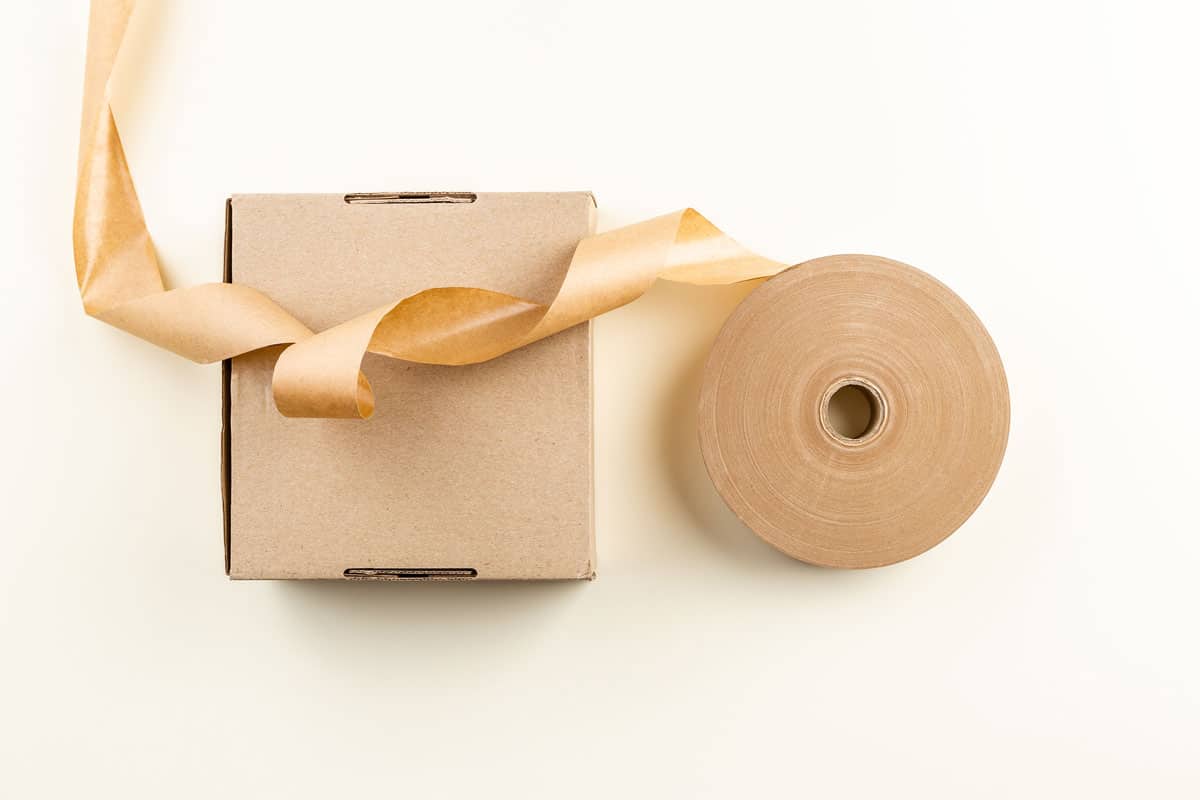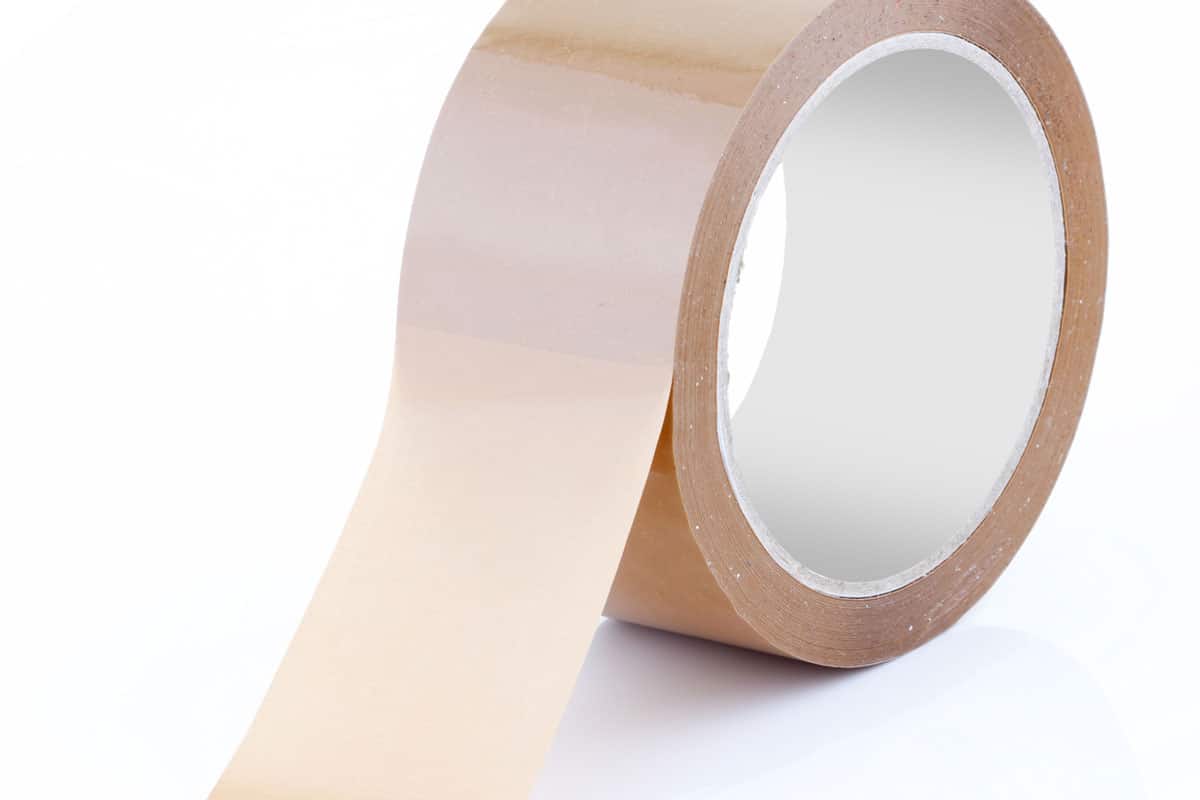It's frustrating when you can't find the end of your tape roll right when you need it the most. We know you can relate to this. Let's put an end to that. We've asked experts for recommendations on how to keep packing tape from sticking to itself and here's what they shared with us.
Put tape markers at the tongue of your packing tape to keep track of the end of the tape. You can use any small item you have at home such as a toothpick, string, ribbon, bread tag, or plastic card to mark the end. These items will act as a barrier between the tape's exterior film and adhesive to prevent them from sticking together.
Keep on reading to find out more practical tips to keep your packing tape from sticking to itself. We'll also tell you what surfaces your packing tape won't attach to and help you remove adhesive residue in various materials. Let's get this started!

How do you unstick a roll of tape?
You've got a lot of stuff to pack but you pause for a little break. When you come back, you can't continue packing because the roll of tape has stuck to itself. It can be frustrating and time-consuming to find the end of your tape, we know.
We've all been there before for sure. Some of us let it go after the incident only to be in the same situation again when it's time to use the tape. But some of us are wiser as they think of practical ways to mark the end of the tape so that we can simply pick up exactly where we left off.
We're sharing with you these practical tips so that you can use your tape and get on with your packing task smoothly.

Keeping Track of the End of Tape
Expert packers recommend the use of tape markers. They don't need to be complex. You don't even need to buy this stuff.
These are simple things you already have at home. You can use a paper clip, toothpick, ribbon, string, bread tag, old credit card, or hotel key card as your tape markers. So, it's basically anything, you get the idea.
Just make sure they are clean before you put them on the tongue of your packing tape so that it will stick to their surface properly. If you're using plastic cards, you can cut them to the right size that'll fit the width of your packing tape.
That's it! When it's time to use your tape again, you won't waste time looking for its end. Aside from being a marker, they will also be a barrier so that the tape won't stick to itself.

What does packing tape not stick to?
As mentioned earlier, packing tape has been designed to stick on different surfaces. This makes it very convenient to use across various materials that you need to seal, close, wrap, or cover.
But they aren't guaranteed to work on every surface. That's why you need to know where you can or cannot use this particular product to optimize its effectiveness.
Packing tape won't stick well to dirty surfaces. Dust and dirt will act as a barrier for the adhesive to stick to the material.

It also doesn't stick to oily or greasy exteriors. They will repel the components found in the adhesives.
You will also notice that it's hard to put tape on something cold. Yes, temperature plays a big part in how adhesion works. If the temperature is low, it could cause the adhesive in the tape to freeze and lose its ability to form a bond with another surface.
You can also check the product information and manufacturer's recommendations regarding the proper use of their product and where you can apply them.
How do I remove adhesive residue?
Packing tapes' greatest strength is their ability to bond well to various surfaces. This makes closing, wrapping, and sealing our boxes and other items for shipping so much easier and safer.

But since they stick really well, it is quite a challenge to remove their adhesive residue especially when you've accidentally put packing tape on surfaces with delicate exteriors such as wood, glass, and fabric.
The residue will also leave an unpleasant mark on plastic and metal surfaces aside from inviting dust and dirt to settle on these portions which can only aggravate the issue.
That's why we're here to give you tips on how to treat adhesive residue on each material. Since each one has a different texture and sensitivity, they require different approaches.
Removing Adhesive Residue on Wood
There are different ways to safely remove packing tape residue on wood but one of the most effective is the use of a hairdryer.
The heat from the hairdryer will break down and melt the components of the adhesive. Just continuously blow hot air from the hairdryer on the packing tape and gently peel off the tape when it is warm enough.
You mustn't wait until the tape is cold once again before you remove the tape. It will only go back to its hard state and will again be difficult to remove.
Use a household oil product to wipe off the residue once you've removed the tape. You can also clean it up with soapy water. Just remember to wipe it dry afterward.
Removing Adhesive Residue on Fabric
The adhesive residue can also leave a stubborn stain on your fabric. But cloth is a very delicate material so you have to use a gentle approach so as not to ruin the fabric.
If spot cleaning with your favorite laundry detergent doesn't work, try deep cleaning. Mix ammonia with hot water and treat the affected area. You can also use an alcohol-based hand sanitizer to treat the stain.
Check out this clear ammonia multi-purpose cleaner on Amazon.
Better test these cleansers first on an unnoticeable portion of your fabric before you go all out on fighting the stain to know how they will affect the material.
Removing Adhesive Residue on Glass
The glass should always be squeaky clean. Having an adhesive residue on its surface ruins its appearance. Good thing that glass isn't that sensitive to chemicals so you can use acetone or spray lubricant to remove the residue and have your glass shining like it's new once again.
Find this pure acetone on Amazon.
Once you've applied these products to the affected area, just rub the glass surface and apply a little pressure to get rid of the residue. Clean and rinse your glassware right after.
Removing Adhesive Residue on Metal
Since metal is durable, it can stand up well against different cleaning products. You can use baby oil and alcohol -either rubbing or isopropyl alcohol variants. Put a few drops on a cotton ball and apply to the area. Wipe off the dirt with a piece of cloth. You can also use soapy water to clean the surface.
Click this link to find this baby oil on Amazon.
Removing Adhesive Residue on Plastic
Although plastic seems durable, take note that certain substances can still damage it. To be safe, you can use warm soapy water to remove the adhesive residue. You can also use white vinegar. Rub this on the plastic surface and apply a little pressure to remove the mark. Rinse it off and wipe it dry.
The takeaway here is that what works for one material may not work for another. Do your research so you don't end up ruining the surface where packing tape was attached.
Final Thoughts

You can use anything as a tape marker as long as it is clean and small enough so that it won't interfere with other stuff that you have stored in your drawer.
Check out these posts for more resources about packing stuff at home:






